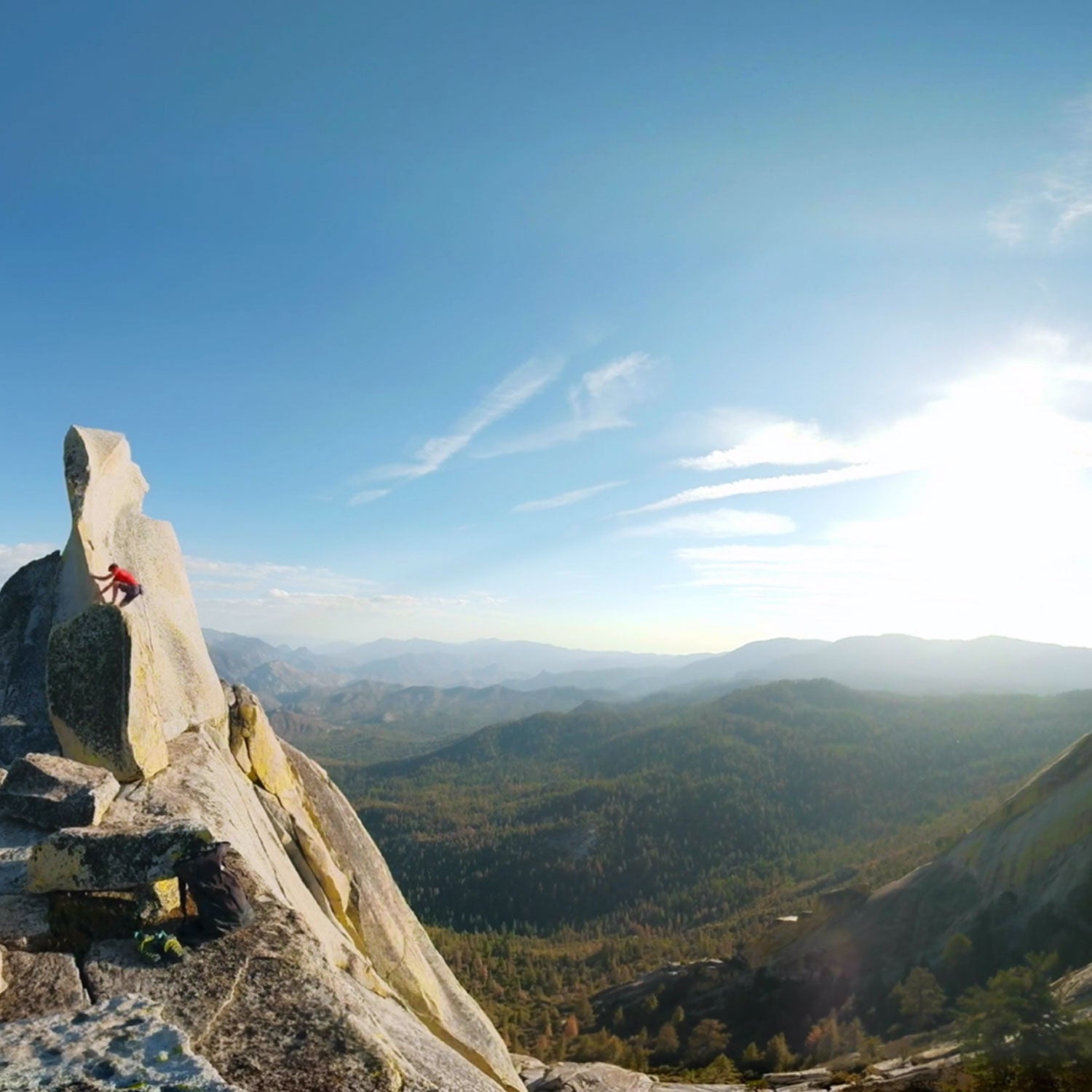“There’s just this larger-than-life feeling about the Needles,” the renowned climber Alex Honnold says over footage of him free-soloing one of the range’s spires in southern California’s Sequoia National Park. “They have this mythical reputation almost, because not many people come out here. You feel like you’re just out there by yourself.”
Thanks to a new virtual reality video series, it’s now possible for thousands of people to feel this sense of solitude, all at the same time.
The series, “,” is the result of a collaboration between outdoor production veterans Camp4 Collective and virtual reality studio Jaunt VR. So far they’ve released four immersive videos showcasing top athletes: Alex Honnold climbing the Needles, Galen Volckhausen kayaking in Iceland, Cameron Zink mountain biking in Utah, and “Sketchy Andy” Lewis slacklining in Moab.
This is certainly not a first in the world of virtual-reality adventure—in fact, Jaunt and Camp4 have already teamed up before, in Nepal. The 360-degree experience just seems like a natural progression from GoPro footie. By enlisting some of the biggest names in extreme sports in this new series, Jaunt makes the case that VR isn’t just cool tech, it’s a superior way to enjoy an adrenaline rush.
Enthusiasts like to say that VR devices are “empathy machines,” because they supposedly create such an immersive experience.
Virtual reality creators must relinquish control in the sense that viewers control the direction of their gaze, but it’s easy to see how our natural reactions can make quick work of such heart-pounding footage. As Honnold talks about how secure he feels while free-soloing, tilt the camera downward and see just how far he could fall. In Moab, turn slowly to see the improbable length of Lewis’s slackline. This is also a great medium for incredulous double-takes, if you want to look back and forth between Volckhausen’s kayak and the gushing waterfall that just spit him out.
“We just wanted to show people what it’s like to go over a waterfall,” said director Tim Kemple of Camp4. He argues that VR is more than just gimmicky video. “To me, 360 is a completely new way of telling stories. It’s like going see a movie versus going to see a play.”
Enthusiasts like to say that VR devices are “empathy machines,” because they supposedly create such an immersive experience that it helps the viewer see the world from someone else’s perspective. In a TED Talk last year, VR evangelist Chris Milk drove this point home by putting his audience in a tent with a young Syrian refugee.
When it comes to adventure sports, VR devices might also be “experience machines” that allow people to “see places they’ll never get to go,” as Jaunt president Cliff Plumer puts it. Whether the viewer is constrained by her budget, or advanced age, or a disability, she can don an Oculus Rift and be transported instantly to the Needles. Thomas Hayden, of the Portland-based 360 Labs, is working on a VR recording of the Grand Canyon in part to help the elderly see it up close.
For all the opportunities VR presents to filmmakers, it also comes with unique challenges. For starters, some sports are better suited to the medium than others. Climbing is especially tricky: “It’s a pretty slow sport, and it’s a 2D sport,” Kemple explained. “I can’t go inside the cliff, so we’re down to 180 degrees from 360.” Shooting from a drone, on the other hand, creates a fuller, 360-degree shot, but that too comes at a cost: it can take days to stitch this footage together from the drone’s many cameras, since the drone is almost always in motion. Virtual-reality editing software does some of this work automatically, but a human touch is required to achieve the seamlessness on which Jaunt and Camp4 insist.
While VR might help extend sports’ fan bases, the “Home Turf” series could also end up using the popularity of adventure sports to build up the VR audience. The medium is still in its infancy, and premium viewing devices like the Oculus Rift headset cost as much as $600. The more compelling content there is available to view in VR, the more likely people are to invest in such headwear. Plumer, of Jaunt, is keenly aware of this. He said “Home Turf” was spurred in part by the fact that VR’s early adopters tend to be gamers and young men. “Our mission is to create VR experiences for our consumers, and right now that’s who our consumers are.”
Neither Plumer nor Kemple would reveal who might appear in future “Home Turf” installments, but they hope to feature sports like surfing and skiing, and to add some female athletes to the roster. On the technical side, Plumer said he hopes to see more interactivity in VR videos in the future. For instance, where the viewer looks might trigger different content—perhaps choosing one path or another as a kayak barrels toward a fork in the river.
The underlying message, Plumer says, is that VR is approaching a turning point as a medium. “A lot of VR so far has been driven by tech. But now the creatives are driving it.”


